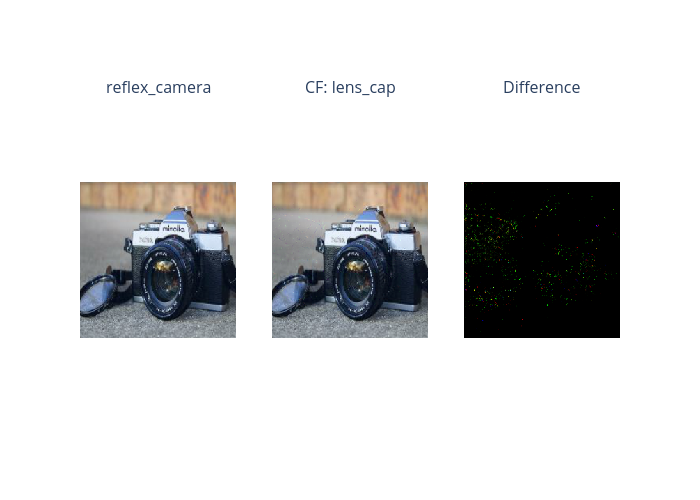Counterfactual explanation on ImageNet
This is an example of CounterfactualExplainer on ImageNet. CounterfactualExplainer is an optimization based method for generating counterfactual examples, supporting classification tasks only. If using this explainer, please cite the paper “Counterfactual Explanations without Opening the Black Box: Automated Decisions and the GDPR, Sandra Wachter, Brent Mittelstadt, Chris Russell, https://arxiv.org/abs/1711.00399”.
[1]:
# This default renderer is used for sphinx docs only. Please delete this cell in IPython.
import plotly.io as pio
pio.renderers.default = "png"
[2]:
import json
import torch
from torchvision import models, transforms
from PIL import Image as PilImage
from omnixai.data.image import Image
from omnixai.explainers.vision import CounterfactualExplainer
We recommend using Image to represent a batch of images. Image can be constructed from a numpy array or a Pillow image. In this example, we load one image for testing purpose.
[3]:
# Load a test image
img = Image(PilImage.open('../data/images/camera.jpg').convert('RGB'))
# Load class names corresponding to the labels
with open('../data/images/imagenet_class_index.json', 'r') as read_file:
class_idx = json.load(read_file)
idx2label = [class_idx[str(k)][1] for k in range(len(class_idx))]
print(img.shape)
(1, 224, 224, 3)
To initialize CounterfactualExplainer, we need to set the following parameters:
model: The ML model to explain, e.g.,torch.nn.Moduleortf.keras.Model.preprocess_function: The preprocessing function that converts the raw data (aimageinstance) into the inputs ofmodel.“optimization parameters”: e.g.,
binary_search_steps,num_iterations. Please refer to the docs for more details.
The model considered here is a ResNet model pretrained on ImageNet. The preprocessing function takes an Image instance as its input and outputs the processed features that the ML model consumes. In this example, the Image object is converted into a torch tensor via the defined transform.
[4]:
# A ResNet model to explain
model = models.resnet50(pretrained=True)
transform = transforms.Compose([
transforms.Resize(256),
transforms.CenterCrop(224),
transforms.ToTensor(),
transforms.Normalize(mean=[0.485, 0.456, 0.406], std=[0.229, 0.224, 0.225])
])
# The preprocessing function
preprocess = lambda ims: torch.stack([transform(im.to_pil()) for im in ims])
[5]:
# Initialize a `CounterfactualExplainer`
explainer = CounterfactualExplainer(
model=model,
preprocess_function=preprocess,
binary_search_steps=2,
num_iterations=100
)
We can simply call explainer.explain to generate counterfactual examples for this classification task. ipython_plot plots the generated explanations in IPython. Parameter index indicates which instance to plot, e.g., index = 0 means plotting the first instance in img.
[6]:
# Generate explanations
explanations = explainer.explain(img)
explanations.ipython_plot(index=0, class_names=idx2label)
Binary step: 2 |███████████████████████████████████████-| 99.0%
